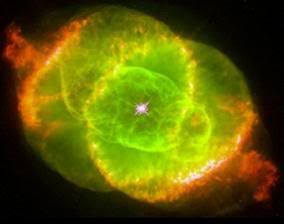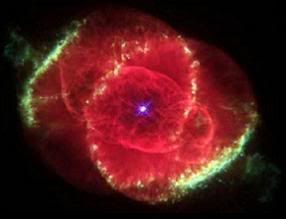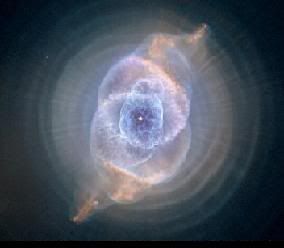|
|
Post by glactus on Jan 23, 2009 13:49:43 GMT
 The Cat's Eye Nebula (NGC 6543) is structurally, one of the most complex nebulae known, with high-resolution Hubble Space Telescope observations revealing remarkable structures such as knots, jets and sinewy arc-like features.  The nebula, discovered by William Herschel on February 15, 1786, is in the constellation of Draco. Distance from earth is about 3,000 light years and magnitude 9.88  Modern studies reveal several mysteries. The intricacy of the structure may be caused in part by material ejected from a binary central star. Like most astronomical objects, NGC 6543 consists mostly of hydrogen and helium. Deep spectroscopic analysis of NGC 6543 indicates that the nebula also contains a small amount of material which is highly enriched in heavy elements.  Credits: These are NASA/Hubble images |
|